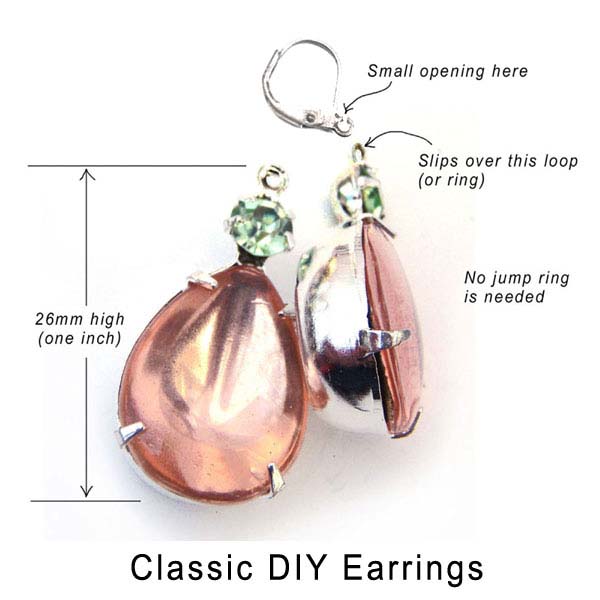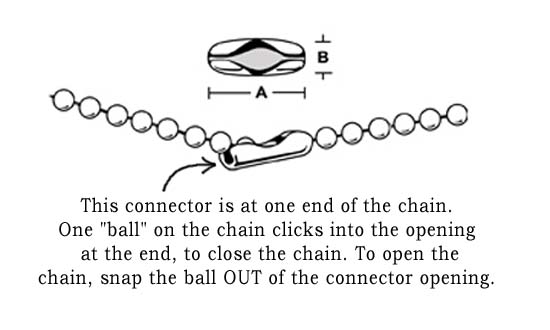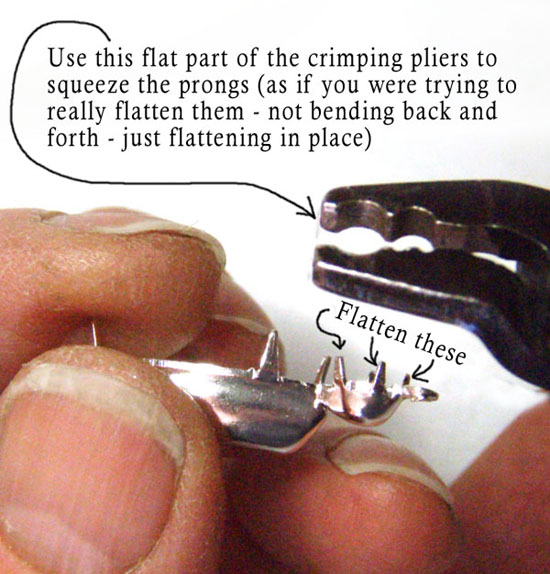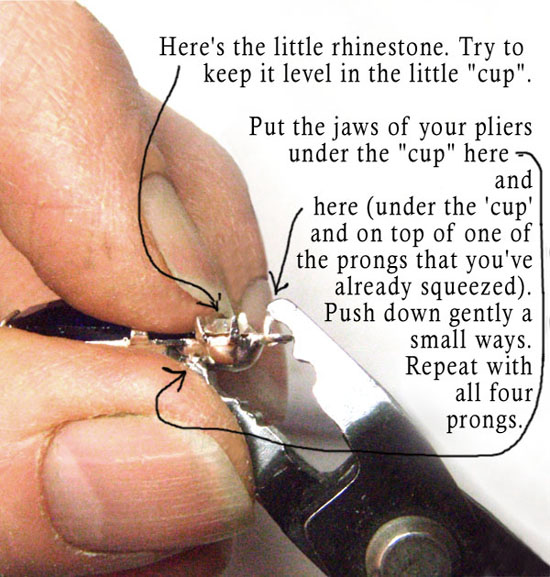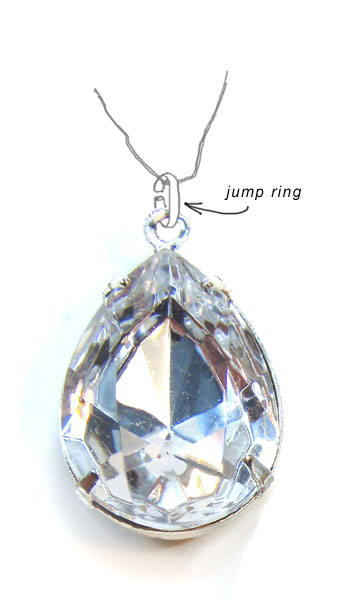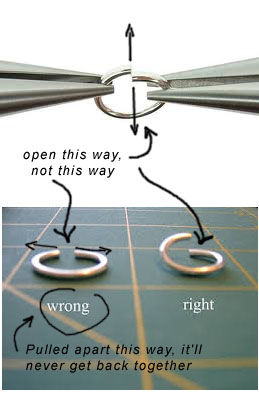If you buy vintage glass jewels or rhinestones, you know what I’m talking about – sometimes the foil is wonderful and adds gorgeous sparkle to your jewels. And sometimes it’s really bad, and they’re just not useable “as is”.
It’s easy to remove the foil and this tutorial will tell you the secret 🙂 (Okay, it’s not really secret. But it is handy to know!)
Turn your jewels from this:
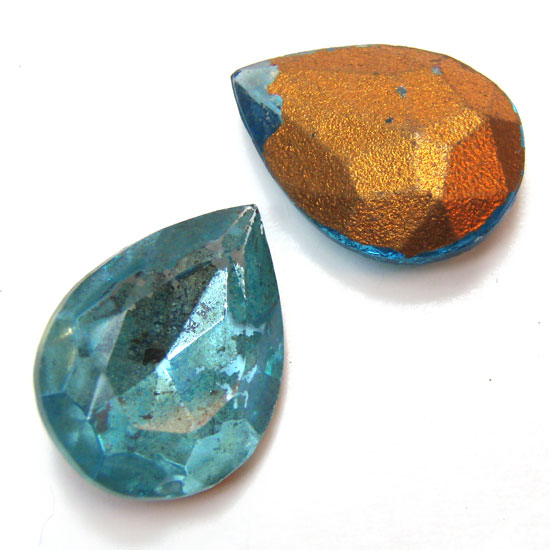
To this:
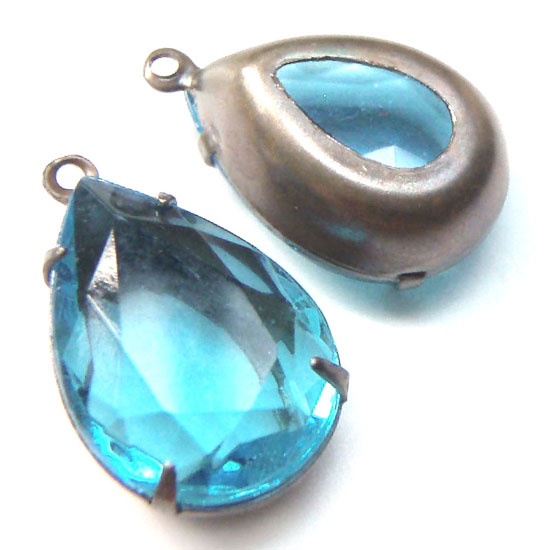
And how do you do it? You soak them in vinegar and salt. That’s it 🙂
Take a small dish or bowl (or plastic tub that used to add margarine or something). If your container has a lid that’s an extra plus – that’s just to help contain the vinegar odor, it doesn’t make any difference to the cleaning process.
(And actually I like the smell of vinegar – to me, it says “clean”, because I use vinegar for an effective, non-toxic cleaning supply.)
It doesn’t have to be fancy expensive vinegar – plain old white vinegar is fine. Put a half cup or so in your plastic container. Add some salt – say a teaspoon (I never actually measure). Stir with a spoon or your finger to dissolve the salt, at least mostly. If you use a spoon, rinse it off afterwards. The acid in the vinegar – that helps so much to remove the foil from your jewel – can also eat away at the metal of your spoon, just a little bit. (For the same reason, don’t put the jewels in this solution, when they’re in metal settings. I’ve done it by accident – and the vinegar will eat away at the setting, enough to etch the surface and make it rough and unuseable.)
Leave the jewels in the vinegar solution for a couple hours, or overnight. It depends on the jewel and the maufacturer – sometimes it only needs an hour and the foil comes off like peeling a grape, a simple rub and you’re done. Sometimes it’s more stubborn, and you need to soak them overnight, and then rub or scour them a bit with your fingers. But I’ve (almost) never found jewels where this didn’t work.
And now your jewels are shining, and very clean (oh! rinse the vinegar off when they’re done – again, just because of the smell). And you can make beautiful jewelry 🙂
P.S. Save the container with the vinegar – you can use it again and again.
P.P.S. An interesting side note. If you do this with a lot of jewels (I do, because I buy a lot of jewels, and probably half? of them have bad foil) – after a while, your vinegar will turn deep turquoise in color. Transparent, but still! Whether the foil is “silver” or “gold” in color, the inner layer of foil (there are usually 2 or 3) has copper in it. And in some scientific spectrum or other, copper = turquoise. Very cool 🙂
